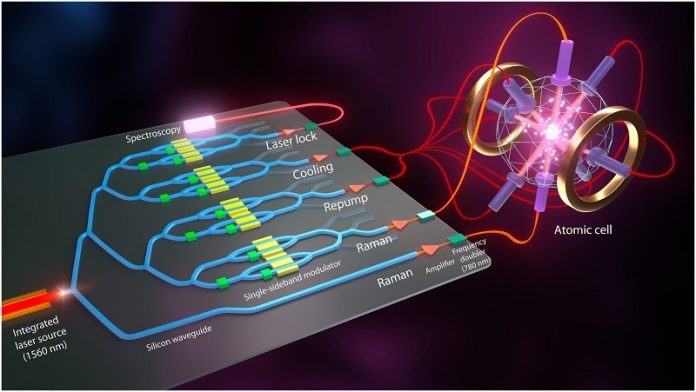
Imagine a future where you don’t need GPS to find your way.
Scientists are working on a new kind of motion sensor that could make this a reality, and it might be small enough to fit in the palm of your hand.
This breakthrough could change the way we navigate, especially in situations where GPS signals aren’t available, like deep underground or in a war zone.
Currently, the motion sensors in our smartphones, fitness trackers, and VR headsets help track position and movement.
These small sensors are also used in larger, more accurate versions for ships, airplanes, and other vehicles that rely on GPS to navigate.
However, scientists at Sandia National Laboratories are developing a much more sensitive sensor—one that’s a thousand times more precise than today’s technology.
The key to this new technology is something called “quantum sensing,” which uses the principles of quantum mechanics to measure movement with extreme accuracy.
The researchers at Sandia have used tiny components called silicon photonic microchips to perform a technique called atom interferometry, a very precise way of measuring acceleration.
This marks a significant step toward creating a “quantum compass” that could work even when GPS signals are blocked or unavailable.
One of the most exciting parts of this research is the development of a new silicon photonic modulator, a device that controls light on a microchip.
This modulator is the centerpiece of a new laser system, which is crucial for the quantum sensing process.
Unlike traditional laser systems, which can be as large as a refrigerator, the new system is small enough to fit on a microchip and strong enough to handle heavy vibrations. This is important for creating a compact, reliable navigation tool.
In the past, an atom interferometer—a device used in quantum sensing—would take up an entire room. But the Sandia team is working on shrinking these devices to a much more manageable size.
They’ve already made significant progress, replacing a large vacuum pump with a vacuum chamber the size of an avocado and combining several components into a single, solid unit. These advancements are making the technology smaller, cheaper, and more practical for everyday use.
Why is this important? In places where GPS signals can’t reach, such as underground or in areas where the signals are intentionally blocked, having a reliable navigation tool is crucial. In military operations, for example, losing GPS can be a serious risk.
Quantum sensing technology could provide a solution by offering a way to navigate accurately without relying on satellites.
The Sandia team is also looking at other potential uses for this technology. For instance, it could help locate underground resources by detecting tiny changes in the Earth’s gravitational field.
The optical components developed for this project might also be useful in other areas, such as quantum computing, LIDAR (a type of radar that uses light), and optical communications.
The project is a collaboration between experts in quantum mechanics, atomic physics, and silicon photonics. The goal is to take atom interferometers—a proven technology—and turn them into a practical tool for real-world navigation.
As the technology gets closer to being used in the field, the team at Sandia is working to make it more stable, portable, and affordable.
In the future, this quantum compass could be a game-changer, providing a reliable alternative to GPS and opening up new possibilities for navigation in challenging environments.
Source: Sandia National Laboratories.



